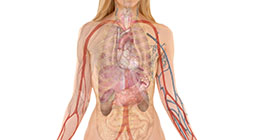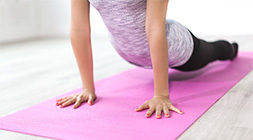
Try this experiment. Spend a few uninterrupted moments thinking about a relaxing day at the beach or your last vacation. Maybe you spent your days lazing on a towel in the sand, feeling the heat beat down, the lulling sound of waves nearby, the mood dozy, peaceful, content. All your daily troubles were far away, the only thing crossing your mind on occasion was what to eat for dinner. Even though you might not realize it, your body is right now responding to this image. Do you feel a little more relaxed, your neck muscles looser? Has a smile inadvertently formed on your face?
The things we imagine, dream about or remember (whether it is positive or negative) actually impacts our physical self on a cellular level. Many professional athletes and Olympic contenders use this technique — they envision success to help them achieve their goals. Sports psychology is a huge industry; a good sports psychologist who can guide a team to a championship is worth her weight in gold. Athletes are often famed for their mental drive. But even if we are not athletes, we can harness this mind-body connection to help us let go of stress and heal our bodies.
Visualization (mental imagery) is a powerful tool that each of us can access within ourselves. In a way, cause and effect starts in our brain. And guiding our thoughts is an important step in life, and in health. Everyone and anyone can benefit from it. Guided imagery can be practised alone, accompanied by a CD or app, or with a health professional.
Benefits of Guided Imagery:
Visualization has proven helpful in reducing pre-surgery anxiety and post-operative pain, in managing other types of pain, in reducing stress and cortisol levels, and in reducing cravings — to mention just a few of the most recent studies. Its effect on immunity is remarkable. In a recent randomized, controlled trial, for instance, 80 women with breast cancer underwent chemotherapy followed by surgery, radiotherapy and hormone therapy. Those in a mind-body intervention group were taught relaxation and guided imagery. They also kept diaries on the frequency of relaxation practice and imagery vividness. Immunological cell activity was checked 10 times over 37 weeks. Researchers found that those women who had engaged in relaxation and guided imagery had significantly higher activity levels of several key immune responses. In other words, guided imagery and relaxation enhanced the women’s anti-cancer defenses. A recent study also confirmed the benefits of using post-stroke visualization for quicker recuperation. Stroke patients who used mental imagery had significantly enhanced relearning of daily tasks and performance compared to a group who received only conventional functional rehabilitation.
Other benefits include:
- Reduces stress and anxiety
- Improves sleep
- Speeds recovery
- Decreases blood pressure
- Decreases pain
How to Visualize for Health
There is no right or wrong way to visualize, although the more senses we use, the better it seems to work. It may also help if you personalize the image you use. If you like gardening, for example, create a visualization about being in your special outdoor place, one with nature.
This visualization would work for any body part.
Step One – Choose Your Focus
On a piece of paper, create a graphic of the body part in question. For example, if you have a blocked artery, where does the blockage occur? Shade or circle the area on the paper. If your heart is weak in a specific area, do the same. Keep in mind that this is your visualization, yours and yours alone. If it is meaningful for you to visualize your heart as the red image we all grew up drawing for Valentine’s Day, that is fine. Or you might be drawn to an encyclopedic depiction of the heart in all its complicated glory, or you might ask your cardiologist for specific details to incorporate into your image. It is less important to have a perfect anatomically correct visual than it is to create one that resonates with you personally.
Step Two – Set Your Healing Goal
Now that you have your “before” image prepared, mentally create an “after” image. If you have arrhythmia, envision a steadily beating heart. If your blood pressure is too low, perhaps your image is a pulsing heart that can push blood through the system without problem. Clogged arteries? Imagine smooth arteries unlined with plaque. You get the idea. And if you do not have a specific heart problem, just visualize your version of a healthy heart. If you also want to draw the “after” image on a separate sheet of paper for reference, go right ahead.
Step Three – Relax
Warm up with a meditation exercise. This will help you to feel relaxed and stay focused on your visualization.
Step Four – Visualize Healing
Ease into your healing visualization. Envision your “before” picture transforming into your “after” picture. A popular technique is using white light. With each breath, envision yourself deeply inhaling pure, bright light. This light is healing, soothing, and pushes out all stress and “before” images as it fills you. Gradually, envision the healing light easing down your chest and congregating around your heart (or around any other injured/ troubled area). As you exhale, imagine black light (negative energy) associated with that area being emitted out of your pores, or the soles of your feet, or other exit points. Let go of all concerns, worries, tension, anxiety and fear in the black light or smoke that leaves your body and dissipates into the universe. Repeat until all blackness is gone and your “after” picture is fully in place, surrounded by clean white energy.
A healing visualization exercise can be as short as a minute or two. Always finish a visualization with several deep, diaphragmatic breaths. Slowly open your eyes and get up when you are ready. Some people also enjoy simple stretching to reaccustom the body to activity.










